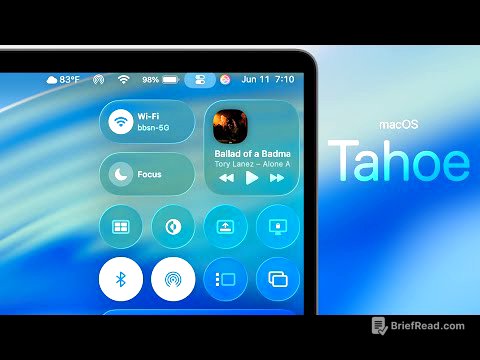TLDR;
This video provides a detailed overview of a battery charger board with a DC-to-DC step-up boost module, commonly used for boosting voltage from lithium cells. The board features a TP4056 charging controller, an HM5454-HM5434 ("MKG2F") battery protection circuit, and an MT3608 boost converter. The video includes tests for short circuit protection, standby current, and reverse polarity protection, offering practical insights into the board's capabilities and limitations.
- The board integrates TP4056 for charging, HM5454-HM5434 for battery protection, and MT3608 for voltage boosting.
- Short circuit protection at the output works effectively without damaging the device.
- Reversing the polarity of the cell will destroy the protection circuit.
battery charge control chip: TP4056 [0:36]
The battery charger board includes a TP4056 chip, a low-cost lithium-ion IC controller that supports constant current and constant voltage charging for a single lithium cell. The default resistor value of 1.2 kiloohms sets the charging current to 1 amp (1000 milliamps), but this can be adjusted via the resistor value to range from 50 milliamps to 1 amp. The board features LEDs to indicate charging status, with red indicating charging and blue indicating that charging is complete.
battery discharge protection chip: HM5454-HM5434 ? ("MKG2F") [2:04]
The cell protection circuit, identified as MKG2F (possibly HM5454 or HM5434), provides essential protection for the lithium cell. This circuit disconnects the cell when it reaches 2.5 volts, preventing over-discharging and over-voltage. Information about this circuit is readily available online, making it easy to understand its functionality and specifications.
boost chip: MT3608 [2:58]
The board utilizes an MT3608 boost converter to step up the voltage. This step-up converter operates at a high frequency, around 1.2 MHz, and can go up to 2 MHz. The MT3608 is rated for up to 2 amps and can boost voltage up to 28 volts, with an operating input voltage range from 2 volts to 24 volts. It also features a current limit at 4 amps.
discharge undervoltage protection: "T point" - badly documented in product description [4:04]
The board includes a "T point" contact, which is relevant when using cells with their own protection boards. If the cell already has a protection board, the "T point" contacts should be shorted to bypass the onboard cell protection. However, if using simple cells without built-in protection, the onboard protection should be utilized, and the "T point" should not be shorted.
standby current: 200uA = 0.2mA - drains a 3000mAh battery in 1 year 8 months [6:42]
The standby current of the device is approximately 200 microamps (0.2mA). This low standby current means the device can remain in standby mode for extended periods. A 3000mAh battery would take about 1 year and 8 months to be fully drained at this rate.
short circuit protection: YES, 30mA, heats up? [7:14]
The board is equipped with short circuit protection at the output. When a short circuit is detected, the current is limited to around 30 milliamps. Although the circuit heats up slightly, no damage occurs, indicating that the short circuit protection is effective and safe.
8:48 cell reverse polarity protection: NO, it will burn discharge protection chip [8:36]
The board does not have reverse polarity protection for the cell. Reversing the polarity will likely damage the protection circuit. Tests show that significant current flows when the polarity is reversed, causing components to heat up and potentially burn out the protection circuit.
output load testing [11:07]
Testing with a large load demonstrates that the short circuit protection at the output functions effectively. Shorting the output does not harm the device. The module considers the cell full at 4.11 volts and stops charging.









